Abstract
The effects of Listeria monocytogenes hemolysin on lysosomes and phagocytic cells were investigated. Hemolysin caused release of β-glucuronidase and acid phosphatase from suspensions of rabbit and rat lysosomes prepared from liver homogenates. The degree of lysis was proportional to the concentration of hemolysin added. There appeared to be no significant difference between the sensitivities of rat and rabbit lysosomes to disruption. Studies on the effect of pH and temperature on lytic activity suggested that hemolysin could function under conditions which might exist within phagocytic cells. Peritoneal exudates from rabbits and mice were exposed to hemolysin and observed by phase microscopy. Hemolysin possessed leucocidal activity and caused degranulation of both rabbit and mouse cells. Optimal activity against lysosomes and peritoneal exudate cells required activation of hemolysin with a reducing agent and could be prevented if hemolysin was previously incubated with cholesterol.
Full text
PDF
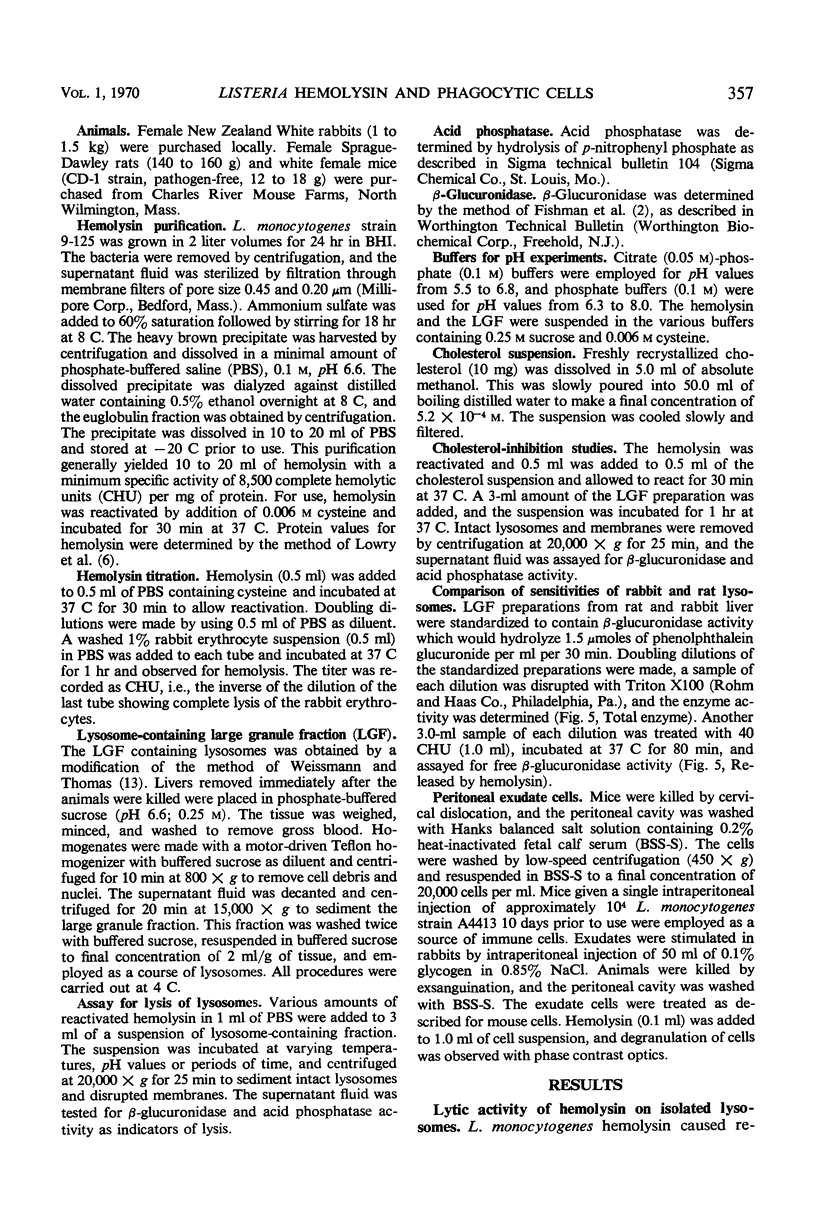
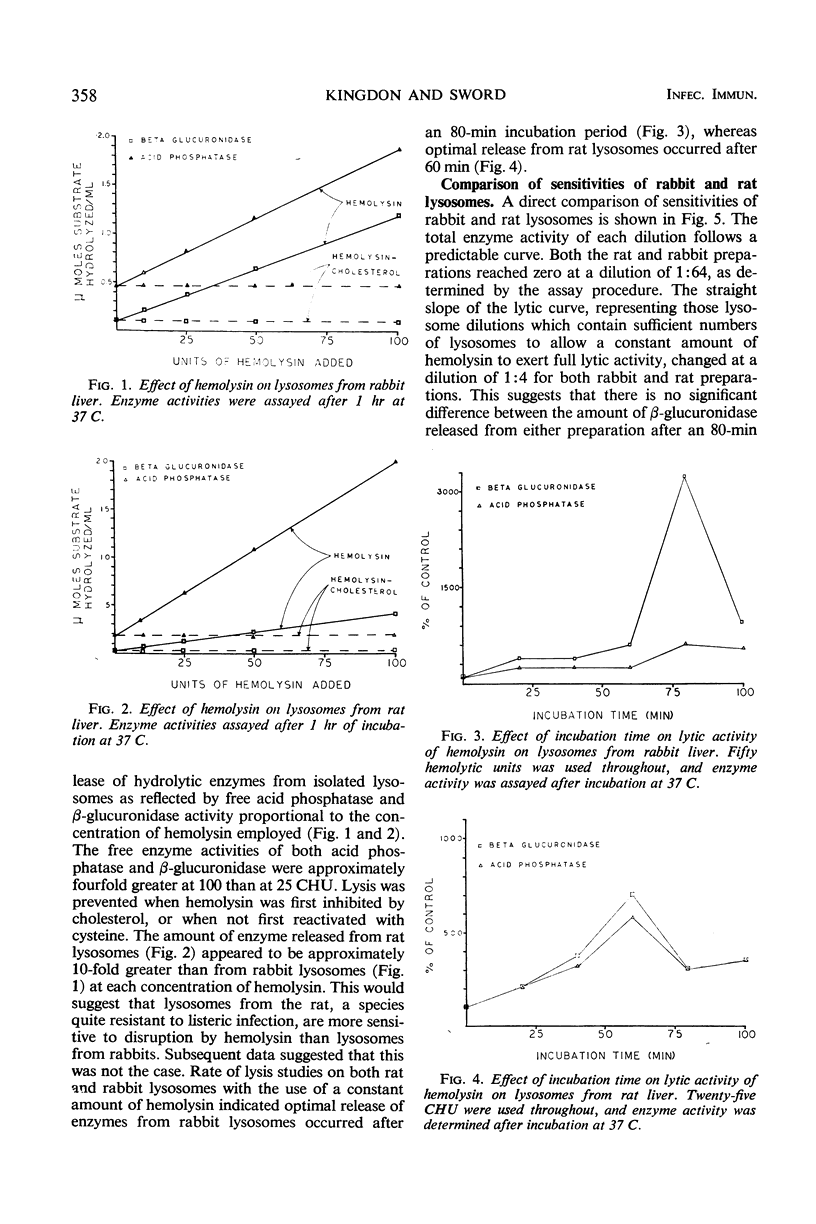

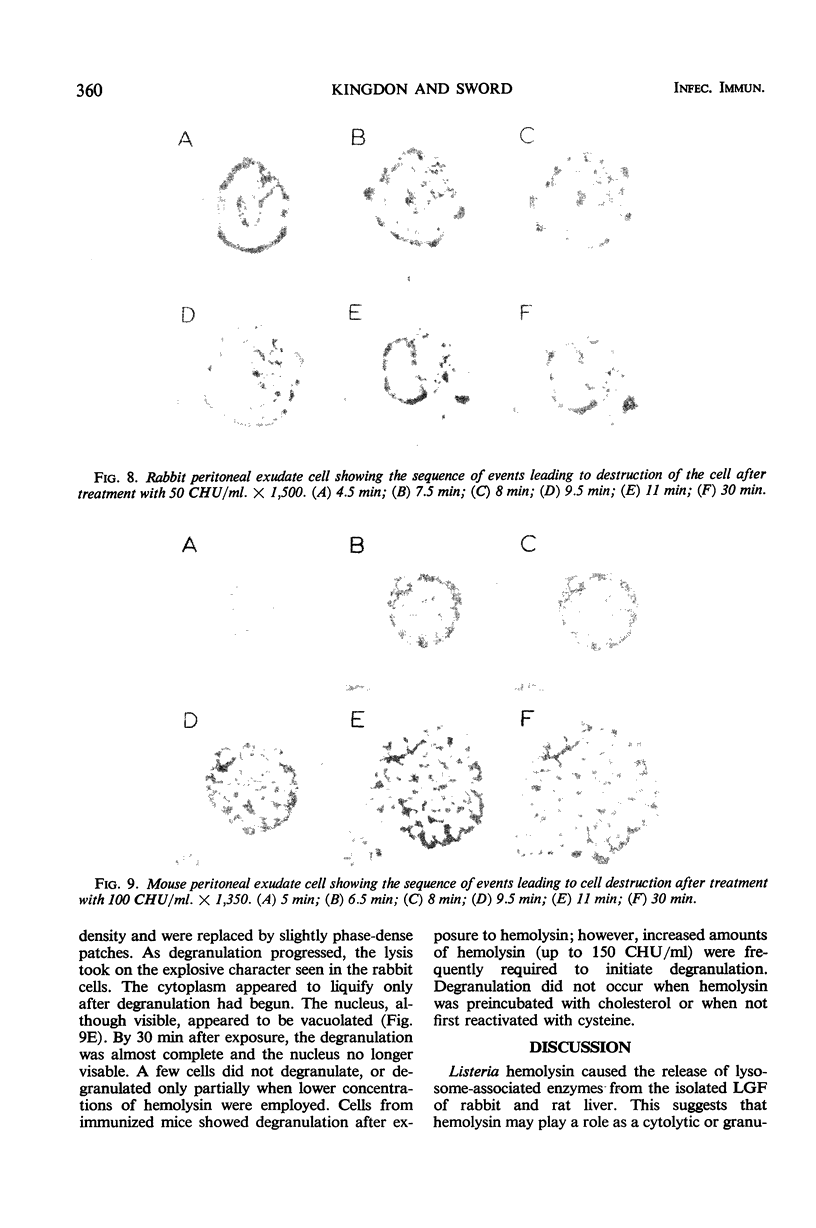
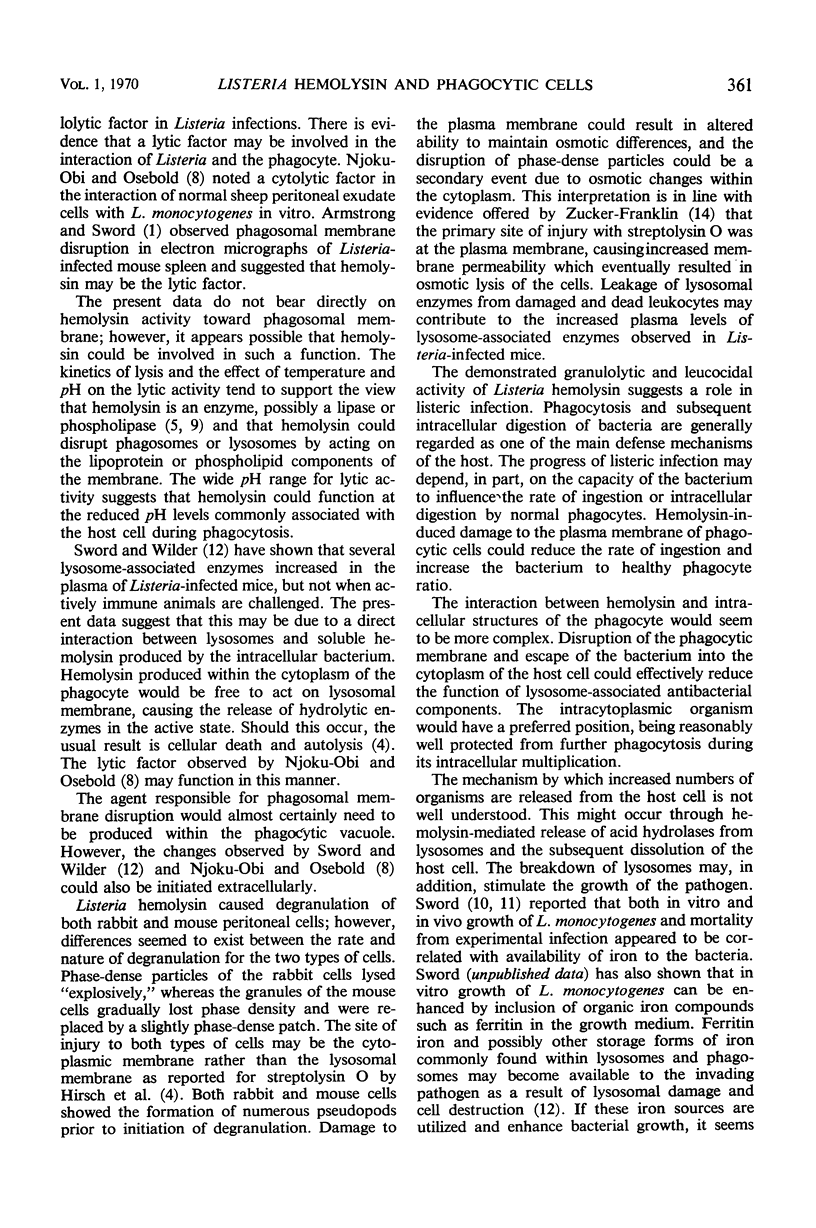
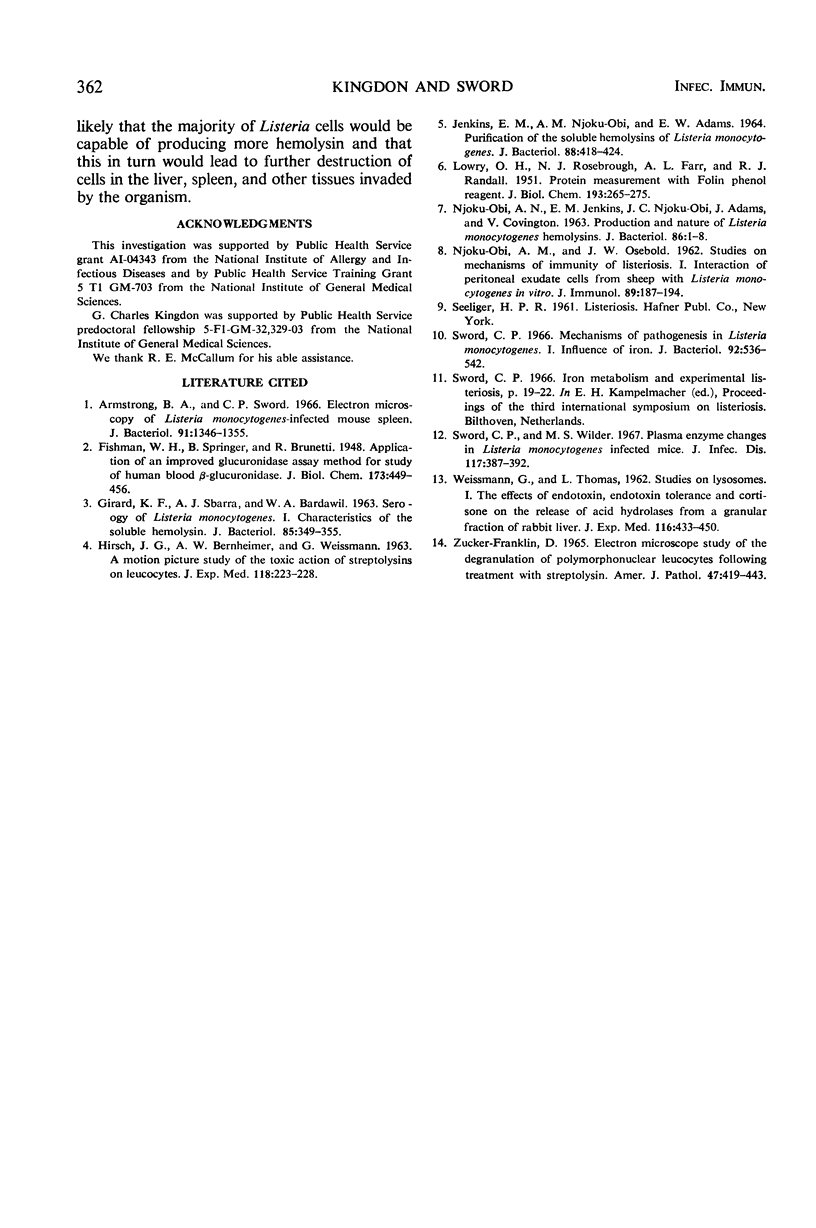
Images in this article
Selected References
These references are in PubMed. This may not be the complete list of references from this article.
- Armstrong B. A., Sword C. P. Electron microscopy of Listeria monocytogenes-infected mouse spleen. J Bacteriol. 1966 Mar;91(3):1346–1355. doi: 10.1128/jb.91.3.1346-1355.1966. [DOI] [PMC free article] [PubMed] [Google Scholar]
- GIRARD K. F., SBARRA A. J., BARDAWIL W. A. Serology of Listeria monocytogenes. I. Characteristics of the soluble hemolysin. J Bacteriol. 1963 Feb;85:349–355. doi: 10.1128/jb.85.2.349-355.1963. [DOI] [PMC free article] [PubMed] [Google Scholar]
- HIRSCH J. G., BERNHEIMER A. W., WEISSMANN G. MOTION PICTURE STUDY OF THE TOXIC ACTION OF STREPTOLYSINS ON LEUCOCYTES. J Exp Med. 1963 Aug 1;118:223–228. doi: 10.1084/jem.118.2.223. [DOI] [PMC free article] [PubMed] [Google Scholar]
- JENKINS E. M., NJOKU-OBI A. N., ADAMS E. W. PURIFICATION OF THE SOLUBLE HEMOLYSINS OF LISTERIA MONOCYTOGENES. J Bacteriol. 1964 Aug;88:418–424. doi: 10.1128/jb.88.2.418-424.1964. [DOI] [PMC free article] [PubMed] [Google Scholar]
- LOWRY O. H., ROSEBROUGH N. J., FARR A. L., RANDALL R. J. Protein measurement with the Folin phenol reagent. J Biol Chem. 1951 Nov;193(1):265–275. [PubMed] [Google Scholar]
- NJOKU-OBI A. N., JENKINS E. M., NJOKU-OBI J. C., ADAMS J., COVINGTON V. PRODUCTION AND NATURE OF LISTERIA MONOCYTOGENES HEMOLYSINS. J Bacteriol. 1963 Jul;86:1–8. doi: 10.1128/jb.86.1.1-8.1963. [DOI] [PMC free article] [PubMed] [Google Scholar]
- NJOKU-OBI A. N., OSEBOLD J. W. Studies on mechanisms of immunity in listeriosis. I. Interaction of peritoneal exudate cells from sheep with Listeria monocytogenes in vitro. J Immunol. 1962 Aug;89:187–194. [PubMed] [Google Scholar]
- Sword C. P. Mechanisms of pathogenesis in Listeria monocytogenes infection. I. Influence of iron. J Bacteriol. 1966 Sep;92(3):536–542. doi: 10.1128/jb.92.3.536-542.1966. [DOI] [PMC free article] [PubMed] [Google Scholar]
- Sword C. P., Wilder M. S. Plasma enzyme changes in Listeria monocytogenes-infected mice. J Infect Dis. 1967 Dec;117(5):387–392. doi: 10.1093/infdis/117.5.387. [DOI] [PubMed] [Google Scholar]
- WEISSMANN G., THOMAS L. Studies on lysosomes. I. The effects of endotoxin, endotoxin tolerance, and cortisone on the release of acid hydrolases from a granular fraction of rabbit liver. J Exp Med. 1962 Oct 1;116:433–450. doi: 10.1084/jem.116.4.433. [DOI] [PMC free article] [PubMed] [Google Scholar]
- ZUCKER-FRANKLIN D. ELECTRON MICROSCOPE STUDY OF THE DEGRANULATION OF POLYMORPHONUCLEAR LEUKOCYTES FOLLOWING TREATMENT WITH STREPTOLYSIN. Am J Pathol. 1965 Sep;47:419–433. [PMC free article] [PubMed] [Google Scholar]




